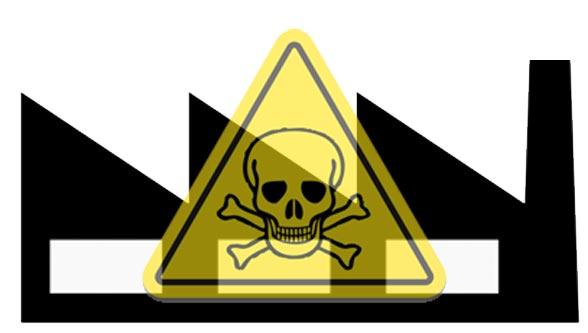Modern manufacturing facilities are chock full of potential hazards, but that doesn’t mean they’re inherently dangerous. Companies with the right processes, equipment, technology, culture and employees can take considerable strides in reducing or eliminating workplace incidents, injuries and productivity downturns.
The following is a look at five of the most persistent manufacturing hazards to avoid on the job, along with some tips for how to do so.
1. Slips and Falls
The typical manufacturing plant presents several opportunities for employees to lose their footing, trip, or slip and fall — whether at ground level or while working on a mezzanine.
Several recommendations can help workers stay safe on the job and give the workforce the protection it needs:
- Employers should establish and enforce good housekeeping practices to keep aisles and walkways clear of materials, product skids and tools.
- Workers should always be aware of their surroundings. For example, factory floors near loading docks may be prone to moisture from outdoors and can present a slip-and-fall hazard.
- Anyone working more six feet off the ground, such as order pickers, must be trained on the proper use of fall-arrest PPE. Another variable is footwear choice, including non-slip shoes and boots.
2. Collisions and Caught-Between Injuries
OSHA published the top 10 most frequently cited workplace safety violations in 2018. Injuries and incidents attributed to powered industrial trucks and a lack of machine guarding both made the list. These statistics help drive home the potentially high likelihood of colliding with or being caught between heavy machinery.
Here’s what employers and workers should know about avoiding these hazards:
- Employers must take their responsibility seriously when it comes to machine guardrails and other physical safety features, and employees must abide by them anytime machines are on or in motion.
- Traffic lanes must be clearly marked and adhered to. The factory must clearly distinguish between vehicle and pedestrian traffic and employees must not take shortcuts that bring them into harm’s way.
- Heavy equipment must have visible, accessible emergency stop switches. Employees should know when to activate these switches if a situation poses any sort of risk.
- In addition to wearing PPE around powered equipment, employees must also avoid long hair and loose sleeves that pose a risk of getting caught in moving parts.
3. Equipment Malfunctions
As we’ve established, powered equipment can pose a safety risk even when it’s working as advertised. One of the other common manufacturing hazards involves equipment that’s not operating properly or fails at a critical moment.
Injuries that arise from manufacturing equipment malfunctions and failures include broken bones, hearing and vision loss, respiratory problems and complications from exposure to toxic materials. Fortunately, organizations can protect themselves and their workers in a number of ways.
For example, employees must receive training on and be required to complete pre-shift inspection procedures for the machinery they plan to use. This process includes everything from checking oil and fuel levels in compressed air equipment to checking the hoses and tires on lift trucks. Neither managers nor employees should feel pressured to use a compromised and potentially unsafe machine just to meet a deadline or productivity benchmark.
Manufacturing facilities can also keep malfunction-related injuries to a minimum by using equipment telematics and predictive maintenance. The Internet of Things can identify the ideal moment to carry out maintenance on a critical machine without risking downtime and before items become safety worries.
4. Cybersecurity
No mention of the IoT is complete without acknowledging a related, and serious, manufacturing industry hazard — cyber attacks. According to research from IBM, between March and August 2019, attacks on industrial systems doubled. Around 50% of the affected companies were in the manufacturing industry.
The cybersecurity hazard in manufacturing requires constant vigilance and a strong culture. Luckily, workers and employers can mitigate risk. Since around 30%of cyber attacks in the sector come from internal actors, training and hiring processes are essential for protecting company IP. Hire for trustworthiness and other soft skills, and not just industry-relevant expertise.
Companies must have a plan for replacing or repairing workstations, computers, tablets, servers and other equipment that contain sensitive information. Assets should be accounted for at all times using chain-of-custody records and geolocation technology. One Facebook employee leaked payroll data on almost 30,000 employees after leaving company hard drives in their car overnight.
You should also remember that not all IoT vendors are created equal. When adding digital infrastructure to a facility, manufacturers must know they can trust the company and the tech behind it. If the service provider doesn’t offer cybersecurity insurance, the company should secure similar protections another way. McKinsey recognizes cybersecurity insurance as a huge opportunity for insurers and clients alike.
5. Lack of Communication
One of the most serious hazards in a manufacturing setting isn’t necessarily safety or maintenance itself, but a lack of communication about it. According to surveys, poor communication can cost the average small business around $420,000 per year.
Across the entire global industry, poor communication costs companies billions each year in the form of damaged equipment or merchandise, injuries and time away from work and lapses in productivity. Here’s what manufacturers and their workers must know about effective communication and workplace hazards:
- Employers should take their responsibility seriously when it comes to placing signage on high-risk areas, and anywhere they store hazardous materials.
- If a worker comes across a damaged tool or piece of equipment or the facility itself is in questionable condition, they cannot keep it to themselves.
- Workplace leaders and employees have a shared responsibility to communicate with one another about working conditions and health.
- Employees should know who to talk to if a peer seems hostile or out-of-sorts. They should already know about exits, safety procedures and rallying points.
Answering the Challenge of Manufacturing Hazards
According to the U.S. Bureau of Labor Statistics, the incidence rates in private industry for “total recordable cases” and for cases involving “days away from work” have both been in steady decline since at least 2009.
We can see that industry as a whole is getting better at insulating itself and its workers from risk and injury — but that doesn’t mean there’s no work left to do. With the following essentials in mind, manufacturers and their workers should feel safer and more confident as they navigate these challenges.
Article by —

Megan Ray Nichols
Freelance Science Writer
nicholsrmegan@gmail.com
www.schooledbyscience.com/about


